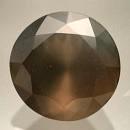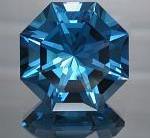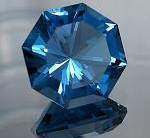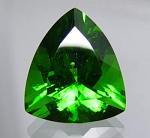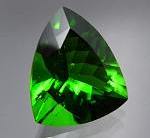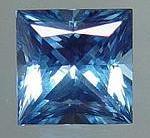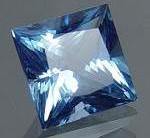|
|
||||||||||||||||
|
||||||||||||||||
|
||||||
|
|
|
|
Obsidian
(volcanic
glass) |
|
| | |
| Prehistoric discovery; IMA status: Not valid (a rock not a mineral) | ||
|
| ||
|
Chemistry |
|
|
| |
|
70 - 75% SiO2 + MgO, Fe3O4 | |
|
|
Silicon Dioxide + Magnesium Oxide and/or Iron Oxide |
|
|
|
|
Classification |
|
|
| |
|
Amorphous (glass) | |
|
n/a | |
|
n/a | |
|
Varieties: |
Fire Obsidian, Mahogany Obsidian, Rainbow Obsidian, Snowflake Obsidian |
|
Synonyms: |
Apache Tears, Bergmahogany, Black Lava Glass, qinolit, qinolite, Volcanic Glass, Xaga |
|
|
|
|
Crystal Data |
|
|
|
|
|
Amorphous, no crystal structure |
|
|
n/a |
|
|
n/a |
|
|
|
|
|
Physical Properties |
|
|
|
|
|
Conchoidal |
|
|
Conchoidal |
|
|
Brittle |
|
|
5.5 - 6.0 |
|
|
2.33 - 3.00 (g/cm3) |
|
|
None |
|
|
Not Radioactive |
|
|
|
|
|
Optical Properties |
|
|
|
|
|
Black, bluish, brown, red, mahogany, golden, rainbow; the colors are largely due to refraction by microscopic bubbles and/or microscopic mineral inclusions. |
|
|
Transparent to Translucent |
|
|
Vitreous (glassy) |
|
|
1.48 - 1.51 (Isotropic) |
|
|
0.000 (Isotropic) |
|
|
n/a |
|
|
n/a |
|
|
|
|
|
Occurances |
|
|
|
|
|
Geological Setting: |
Produced from volcanoes when certain types of lava cools rapidly by flowing into a body of water. |
|
Common Impurities: |
Mg, Fe |
|
Type Locality: |
n/a |
|
Year Discovered: |
Prehistoric |
|
View mineral photos: | |
|
|
|
|
More Information |
|
|
|
|
|
| |
|
|
|
|
There are several types of Obsidian typically offered as gems. The most common are opaque cabochons of black, Mahogany, Snowflake or Rainbow Obsidian. Mahogany Obsidian has brownish red patches or swirls in black Obsidian while Snowflake Obsidian has grayish white patches in black Obsidian. Rainbow Obsidian has an iridescent, rainbow-like sheen. There are also translucent Obsidian gems with white inclusions of Cristobalite. These are often called Cosmic Obsidian. Another type of Obsidian is called "Apache Tears" because of a legend of the Apache tribe. The legend is that about 75 Apache warriors and the US Cavalry fought on a mountain overlooking what is now Superior, Arizona in the 1870s. Facing defeat, the outnumbered Apache warriors rode their horses off the mountain to their deaths rather than be killed by the soldiers. The wives and families of the warriors cried when they heard of the tragedy and their tears turned to stone upon hitting the ground. Apache Tears are usually translucent to transparent and medium brown in color. Green
"Obsidian" Please
note: "Transparent blue or green Obsidian" |
|
|
|||||||||||||||||||||||||||||||||||||||||||||||||||||||||||||||||||||||||||||||||
